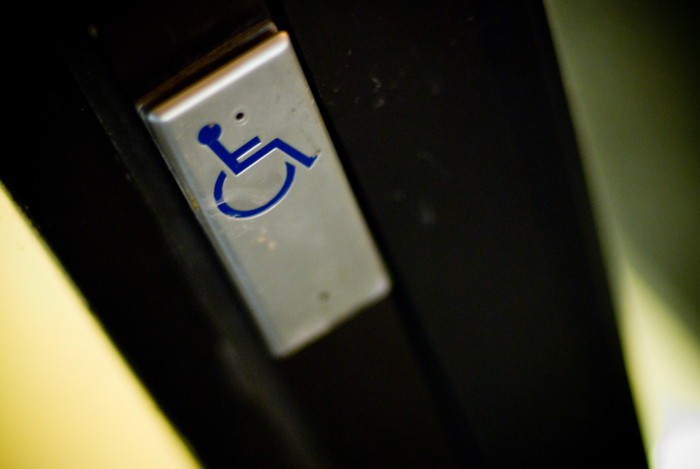An inaccessible city
Winnipeg lacks accessible housing for people with disabilities
Stephen Ward counts himself lucky to be living in accessible housing in Winnipeg.
Even though he’s lived at Riverside Lions Estates retirement home for seven years, it took him some time to move in.
“It took me two years on a waiting list to get in,” Ward said.
Yet Ward is only 34-years-old. Living on social assistance for his disability, he volunteers at an elementary school doing presentations about Cerebral Palsy and tutors kids in math.
Ward thinks accessible housing in the city is geared more towards senior citizens.
“I think there’s a shortage of options available for people like myself, who want to be around people their own age and are stuck living in residences that are unsuitable for building relationships with people their own age.”
Derek Day, supervisor of adult leisure/recreation with the Manitoba Society of Disabilities, said there is more to accessibility than getting in the door.
“It is also about having elevators and washrooms with big enough doors,” Day said.
“ The registry has become a useless tool, there is a two to five year backlog of people on the waiting list.
Don Ament, Ten Ten Sinclair Housing Inc.
“There are all sorts of disabilities and each one has certain issues.”
Don Ament, housing development co-ordinator with Ten Ten Sinclair Housing Inc., said Winnipeg needs more accessible apartments.
Ten Ten Sinclair is a non-profit charitable group that supports and develops independent living for people with physical disabilities.
They keep a registry of the living spaces that meet people’s physical needs in Winnipeg. Winnipeg currently has 85 residences adapted for wheelchairs, with another 150 are somewhat adapted.
“That’s not a lot of apartments,” Ament said.
The registry does not include any places included in Manitoba’s Affordable Housing Initiative, a tri-level government agreement to provide affordable housing projects in the province.
“The registry has become a useless tool, there is a two to five year backlog of people on the waiting list” for each accessible housing spot, he said.
Ament said the non-profit sector has done its best and now the private sector and the government need to contribute.
The federal government should sponsor a national social housing program, he said.
“They need to build en masse,” Ament said. “It’s the only way to get our head above water.”
Stephanie Bento, media relations officer with Canada Mortgage and Housing Corporation, said the last federal budget included initiatives for housing for persons with disabilities.
The 2008-2009 federal budget allocated $7.8 billion for building new quality housing, as well as a tax credit of up to $1,350 for low-income persons with disabilities to aid in renovating their home.
The federal government also has the Rental Rehabilitation Assistance Program (RRAP) for persons with disabilities.
It offers homeowners and landlords financial assistance to make their property more accessible for persons with disabilities.
Darrell Jones, a spokesperson for Manitoba Housing and Renewal Corporation (MHRC), which administers RRAP in the province, said MHRC also offers interest free, forgivable loans up to $19,000 for homeowners and landlords to cover the cost of renovating their property.
But some local property management agencies feel these loans aren’t enough.
“[RRAP] does not help,” said Max Reich, president of Astroid Management.
Reich said that with Winnipeg’s rent control, the investor would not be able to recover the cost of the renovations.
Also, many of Winnipeg’s buildings cannot be converted due to their original concrete and steel nature.
“If there was more funding available, it might pay off,” Reich said.
Reich said Astroid had a property on Sturgeon Road five years ago that had 15 accessible units, but found there was limited demand for those suites.
He concedes the location may have played a factor in the lack of interest.
“You had to have a car, for there was no easy public transit access,” he said.
According to the MHRC spokesperson, the province is currently funding a 20-unit integrated family/disability project in St. Boniface.
They are also helping fund the construction of four accessible inner city homes.
Published in Volume 63, Number 26 of The Uniter (April 2, 2009)








